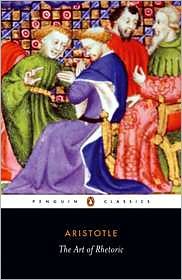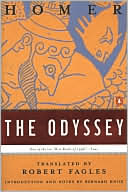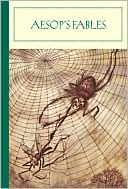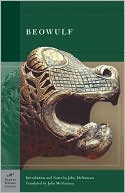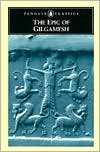The Art of Rhetoric
Few, if any, writers in history have made major contributions to as many fields of knowledge as Aristotle... \ 'If there are two definitive features of ancient Greek civilization,' writes Hugh Lawson-Tancred in his wide-ranging Introduction, 'they are articulacy and competition.' In the city-states oratorical competence was an essential asset for politicians in the Assemblies and Councils and even for ordinary citizens in the courts of law. In response, the technique of rhetoric rapidly...
Search in google:
Few, if any, writers in history have made major contributions to as many fields of knowledge as Aristotle... 'If there are two definitive features of ancient Greek civilization,' writes Hugh Lawson-Tancred in his wide-ranging Introduction, 'they are articulacy and competition.' In the city-states oratorical competence was an essential asset for politicians in the Assemblies and Councils and even for ordinary citizens in the courts of law. In response, the technique of rhetoric rapidly developed, bringing virtuoso performances and a host of practical manuals for the layman. Yet if many of these were little more than collections of debaters' tricks, the hugely influential Art of Rhetoric has a far deeper purpose. It is here that Aristotle (384-322 B.C.) establishes the methods of informal reasoning, provides the first aesthetic evaluation of prose style and offers detailed observations on character and the emotions. 'Persuasiveness,' suggests Lawson-Tancred, 'becomes for the first time a systematic and even scientific exercise; it can indeed be taught, but only by a deep grasp of some of the most central features of human nature.' His fine translation makes freshly available an epoch-making work of literary criticism.
Translated with an Introduction and Notes by Hugh Lawson-Tancred\ Preface Introduction:\ 1. The Importance of Ancient Rhetoric\ 2. The Historical Background to the Rhetoric\ 3. Rhetoric as Techne\ 4. Psychology in the Rhetoric\ 5. Style and Composition\ 6. The Rhetorical Legacy of Aristotle\ 7. The Translation\ THE ART OF RHETORIC Section One: Introductory\ Chapter 1.1. The Nature of Rhetoric PART ONE: DEMONSTRATION Section Two: The Genres of Oratory\ Chapter 1.2. The Definition of Rhetoric Chapter 1.3. The Genres\ Section Three: Deliberation\ Chapter 1.4. The Province of Deliberation Chapter 1.5. Happiness Chapter 1.6. The Good and the Expedient Chapter 1.7. Relative Expediency Chapter 1.8. Constitutions\ Section Four: Display\ Chapter 1.9. Display Oratory\ Section Five: Litigation\ Chapter 1.10. Injustice Chapter 1.11. Pleasure Chapter 1.12. The Criminal Mind Chapter 1.13. Crime and Punishment Chapter 1.14. Relatively Serious Crimes Chapter 1.15. Non-technical Proofs PART TWO: EMOTION AND CHARACTER Section Six: Emotion\ Chapter 2.1. The Role of Emotion and Character Chapter 2.2. Anger Chapter 2.3. Calm Chapter 2.4. Friendship and Enmity Chapter 2.5. Fear and Confidence Chapter 2.6. Shame Chapter 2.7. Favour Chapter 2.8. Pity Chapter 2.9. Indignation Chapter 2.10. Envy Chapter 2.11. Jealousy\ Section Seven: Character\ Chapter 2.12. Youth Chapter 2.13. Old Age Chapter 2.14. Prime Chapter 2.15. Birth Chapter 2.16. Wealth Chapter 2.17. Power PART THREE: UNIVERSAL ASPECTS Section Eight: Common Topics\ Chapter 2.18. The Role of Common Topics Chapter 2.19. The Topics of Possibility Chapter 2.20. Example Chapter 2.21. Maxim Chapter 2.22. Enthymeme Chapter 2.23. Demonstrative Common Topics Chapter 2.24. Illusory Topics Chapter 2.25. Refutation Chapter 2.26. Amplification\ Section Nine: Style\ Chapter 3.1. Historical Preliminary Chapter 3.2. Clarity Chapter 3.3. Frigidity Chapter 3.4. Simile Chapter 3.5. Purity Chapter 3.6. Amplitude Chapter 3.7. Propriety Chapter 3.8. Rhythm Chapter 3.9. Syntax Chapter 3.10. Wit and Metaphor Chapter 3.11. Vividness Chapter 3.12. Suitability to Genre\ Section Ten: Composition\ Chapter 3.13. Narration and Proof Chapter 3.14. The Introduction Chapter 3.15. Prejudice Chapter 3.16. Narration Chapter 3.17. Proof and Refutation Chapter 3.18. Altercation Chapter 3.19. The Epilogue Notes Bibliography
